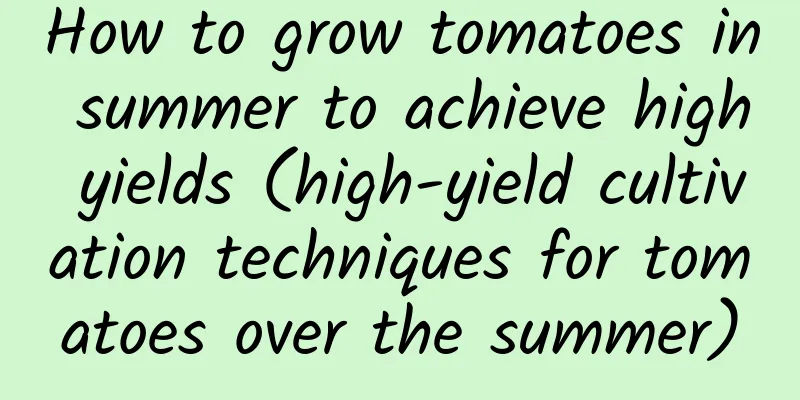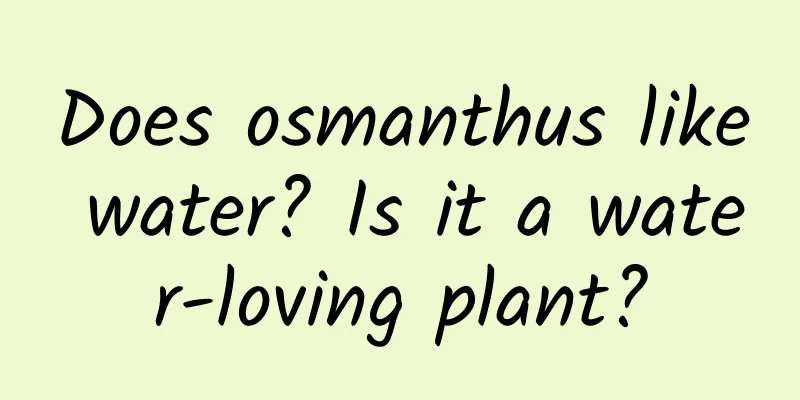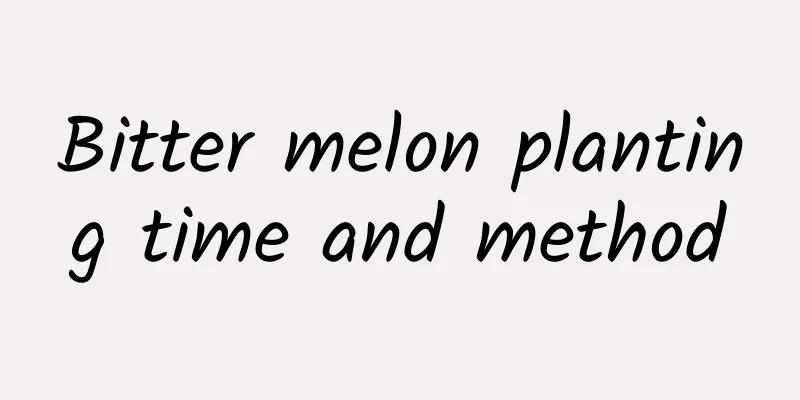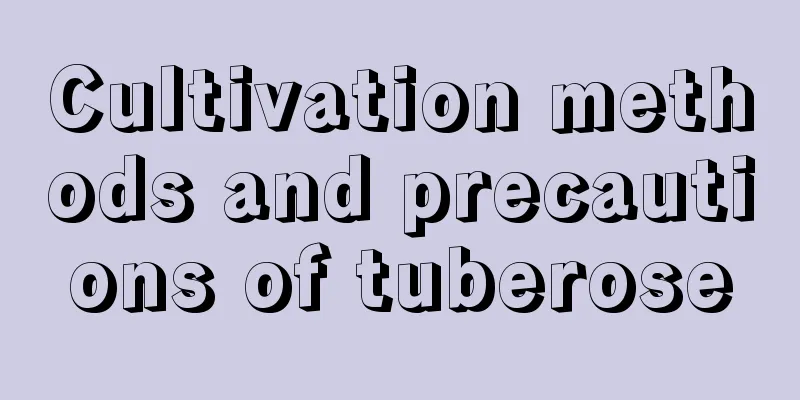How to grow tomatoes in summer to achieve high yields (high-yield cultivation techniques for tomatoes over the summer)

|
With the arrival of summer, tomatoes are also one of the common vegetables in our lives. In the tomato planting and management technology, cultivation facilities and management technology are indispensable. The following is a detailed introduction to tomato cultivation and management technology. 1. Build the frame and tie the vinesAfter the plants are planted and survive, a frame should be erected in time. You can choose bamboo poles or tree branches that are 1.6-1.8 meters long and as thick as an index finger, and insert them firmly into the ditch side 8-10 cm away from the plants, and connect them into a high "human" frame. When the plant grows to a certain height, tie the vines with cloth strips or plastic ropes in several times to ensure that the tomato plant grows normally upward. 2. Pruning and buddingPruning and bud removal is an important technical measure to artificially adjust the vegetative growth and reproductive growth of plants. In autumn, tomatoes are generally pruned by double trunks, that is, in addition to leaving the main trunk, a strong lateral bud at the bottom of the inflorescence is left to form a fruiting lateral branch, and all other leaf buds are removed. Depending on the growth of the plant, you can top it at the right time. When the side buds are about 3.3 cm long, they should be removed in time. Too early or too late is not conducive to the growth and development of the plant. It is not advisable to remove buds on rainy days to prevent infection. 3. Topdressing and irrigationIt is better to apply compound fertilizer, urea and other fertilizers to tomatoes. Topdressing should be carried out reasonably according to the weather and seedling conditions. In dry weather, less fertilizer should be applied frequently, and more fertilizer can be applied appropriately after rain or before irrigation. It is also necessary to master the principle of light at the beginning and heavy later, that is, apply light fertilizer to promote seedling development before fruit setting, especially control nitrogen fertilizer, and apply top dressing regularly during the fruit swelling period and harvest period. When the walnut fruit is big, it needs to be watered and fertilized, and the soil should be kept moist at all times. It is necessary to carry out work such as planting racks, tying vines, and cultivating the soil in time. In case of continuous drought, timely irrigation should be carried out to prevent drought. It is advisable to use small water flow ditch irrigation, and never flood the floor. Watering should be done at night on sunny and hot days to avoid root damage. After irrigation, attention should be paid to ventilation and humidity reduction to reduce the occurrence of diseases. 4. Temperature control managementDuring the flowering period of tomatoes, the suitable temperature is 25-30℃ during the day and 20-15℃ at night. Temperatures below 15℃ or above 35℃ can easily cause flowers and fruits to fall or physiologically deformed fruits. Therefore, if the temperature is too high, shade should be provided or ventilation should be increased during the day. If the temperature is too low, film should be added at night. The appropriate temperature difference between day and night is 12-20℃. 5. Protect flowers and fruitsBefore flowering and fruiting, water control is the main measure to keep the seedlings dry. The greenhouse should be ventilated day and night and closed on rainy days. During the flowering period of tomatoes in autumn, the climate is often hot and dry, which is not conducive to pollination and fertilization, and affects fruiting. 6. Prevent and control fruit crackingTomato fruit cracking is a common physiological phenomenon. The main reason for fruit cracking is water imbalance, which is also closely related to the variety. Measures to prevent tomato fruit cracking The first is variety selection. It is advisable to choose varieties that are crack-resistant, have lush branches and leaves, and have thicker and tougher peels. The second is to keep the soil moist. Use mulch or straw to cover the soil to maintain a relatively stable soil moisture and prevent it from fluctuating between dry and wet. The third is to increase the application of organic fertilizer, improve soil structure, and enhance the soil's ability to retain water and fertilizer. Fourth, prune and pinch the branches moderately to ensure that the plants have lush branches and leaves, enhance the transpiration of excess water in the plants, and prevent strong sunlight from directly shining on the fruits. Fifth, harvest tomatoes in time before heavy rain. Sixth, during the fruit expansion period, spraying the plants with 0.30-0.4% Bordeaux mixture is effective in preventing tomato fruit cracking. |
Recommend
Can Kirin flower be hydroponically cultivated? Hydroponics cultivation method
Can Qilin flower be hydroponically cultivated? Ky...
How and when to plant lettuce
Lettuce planting time and month For lettuce, wint...
How to deal with drooping leaves of Clivia
1. Control the temperature 1. Reason: Unsuitable ...
Does boxwood prefer shade or sun?
Does boxwood prefer shade or sun? Boxwood is easy...
Where do asparagus seeds come from?
Where do asparagus seeds come from? Asparagus is ...
These 3 kinds of flowers love vinegar the most. Add a pound of vinegar each time and their leaves will be green and shiny!
Because there are more and more types of flowers ...
How to grow henna well? Cultivation methods and precautions
Henna is a common ornamental flower and also a me...
How to plant baby's breath and how to arrange it in a vase
1. Planting method 1. Soil selection: Before plan...
Common diseases of Agapanthus and their prevention and treatment methods
Common diseases of Agapanthus: leaf spot Symptoms...
What are the steps for passion fruit cuttings?
1. Cutting time Cutting propagation is a widely u...
How to distinguish between Albizia Julibrissin and Hibiscus?
Morphological characteristics Albizia Julibrissin...
How to Plant Mint Seeds
Mint Seeds Introduction Mint seeds grow in the fr...
How to water hibiscus?
Hibiscus life characteristics: Hibiscus has a par...
How to reproduce Goldilocks
1. Sowing time If you want to sow the willow croa...
How to make cherry cuttings take root easily
Cut one-year-old strong branches from the cherry ...









